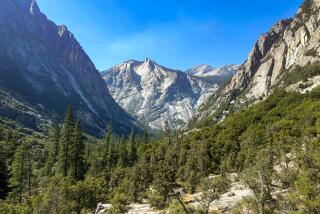Four wild ways to mark refuges’ 100th birthday
One hundred years ago, President Theodore Roosevelt turned a novel concept into reality. The idea: national wildlife refuges.
Roosevelt was galvanized into action by the plight of Florida’s Pelican Island. Hunters were slaying the island’s birds for their feathers, commonly used in women’s hats. Roosevelt declared Pelican Island a wildlife refuge on March 14, 1903.
Since then, the number of refuges has grown to almost 600 and the number of acres preserved to more than 95 million. The refuges protect creatures as diverse as the whooping crane and the Arctic caribou. They are found in every state and nearly every major metropolitan area.
The best way to celebrate the centennial of the National Wildlife Refuge System is to visit one of its members. The refuges, managed by the U.S. Fish and Wildlife Service, abound with opportunities for hikers, bird-watchers, anglers, nature photographers, even hunters in some places. (Stamp collectors also can celebrate with a commemorative Pelican Island stamp, scheduled for release March 14.)
Southern California is fortunate to have two kinds of refuges: inland and coastal. Winter, when temperatures drop and the bird count rises, is a great time to visit. This week I’m describing my favorite refuges to roam:
* Sweetwater Marsh National Wildlife Refuge, Chula Vista Nature Center, 1000 Gunpowder Point Drive, Chula Vista, CA 91910; (619) 409-5900, sandiegorefuges.fws.gov/Sweetwater.htm or chulavistanaturecenter.org.
San Diego Bay’s largest remaining wetland was set aside as a refuge in 1986 to preserve such endangered species as the light-footed clapper rail and the California least tern.
The Chula Vista Nature Center houses excellent, kid-friendly displays about coastal wetlands. A network of short trails leads from the center into Sweetwater Marsh. Viewpoints along the 1 1/2 miles of trail take walkers past abundant bird life. Guided walks are offered on the weekends. Bring your binoculars or rent a pair from the center.
To get there, follow Interstate 5 about seven miles south of downtown San Diego. Exit at E Street in Chula Vista. Drive west a block to a parking lot, where a shuttle picks up visitors for the short ride to the center.
* Tijuana Slough National Wildlife Refuge, Tijuana Estuary Visitor Center, 301 Caspian Way, Imperial Beach, CA 91932; (619) 575-3613, tijuanaestuary.com or sandiegorefuges.fws.gov/Ti juana.htm.
Here at the Tijuana River estuary, 1 1/2 miles north of Mexico, hikers can watch for marsh hawks, brown pelicans, black-necked stilts, snowy egrets and about 170 other kinds of birds.
The Fish and Wildlife Service and state agencies staff a nice visitor center that interprets marshland ecology. Pick up the pamphlet on the Tijuana reserve’s natural history and follow trails for a mile or two around the estuary.
To get there, follow Interstate 5 to Imperial Beach, exit at Palm Avenue and drive west 2 1/2 miles. At 3rd Street turn left and drive half a mile to the visitor center parking lot.
* Sonny Bono Salton Sea National Wildlife Refuge, 906 W. Sinclair Road, Calipatria, CA 92233; (760) 348-5278, pacific.fws.gov/refuges/field/CA_sbono.htm.
Loud, honking Canada geese flying in V formations are the most noticeable feathered friends here. Also easy to spot are large snow geese, plus the smaller Ross’ and white geese.
Rock Hill Wildlife Trail explores an interesting habitat called a cover strip, where trees and shrubs grow along dikes that separate farm fields. Mesquite and paloverde trees provide food and protection for Gambel’s quail, mourning dove and loggerhead shrike. The trail, two miles round trip, also visits the Salton Sea shoreline and climbs to the top of Rock Hill, a volcanic butte with great desert views.
Reach the visitor center by following Highway 111 until you’re 3 1/2 miles north of Calipatria. Turn west on Sinclair Road and drive six miles to the refuge headquarters and visitor center.
* Coachella Valley National Wildlife Refuge, Coachella Valley Preserve, pacific.fws.gov/coach/ or www.ca.blm.gov/caso/wf-coachella.html. Driving directions below; direct inquiries to Sonny Bono Salton Sea National Wildlife Refuge (see previous listing for mailing address and phone number).
This refuge protects habitat for the threatened Coachella Valley fringe-toed lizard, an 8-inch reptile known as the “sand swimmer” because of its ability to dive through dunes. Large, fringe-like scales on its toes give the lizard traction as well as its name.
The refuge is closed to the public except for one hiking trail on its north side. But surrounding acreage is open and boasts great hiking trails. This land, the Coachella Valley Preserve, is managed by a consortium of state and federal agencies and the Nature Conservancy.
Hikers can take short trails to explore Thousand Palms Oasis, California’s second-largest collection of native fan palms, plus other oases. Don’t miss the McCallum Trail, 1 1/2 miles round trip.
Follow Interstate 10 about 10 miles east of the Highway 111 turnoff for Palm Springs. Take the Washington Street/Ramon Road exit and drive north on Washington, which bends west and continues as Ramon. Soon after the bend, turn right (north) onto Thousand Palms Canyon Road, which leads to the preserve’s dirt lot.
*
John McKinney offers other tips at www.thetrailmaster.com.
More to Read
Sign up for The Wild
We’ll help you find the best places to hike, bike and run, as well as the perfect silent spots for meditation and yoga.
You may occasionally receive promotional content from the Los Angeles Times.






